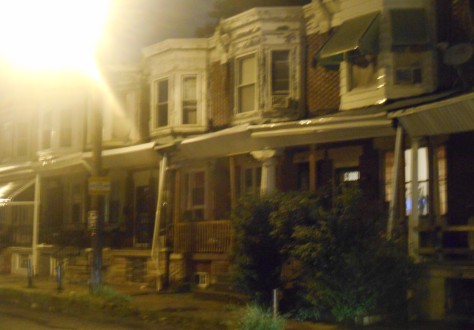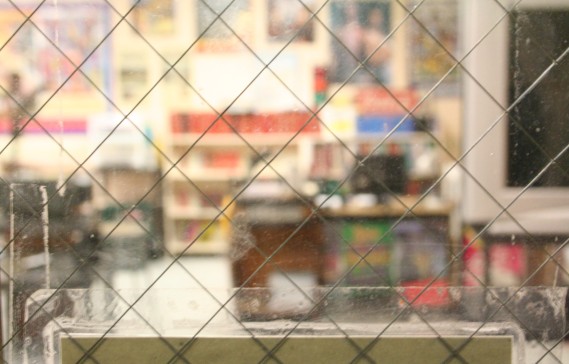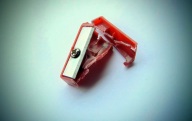.
What happened to Jasmine?
.

When you look inside a classroom there are some things you can not see….
.
Jasmine was one of my favorites.
She was one of the shortest, scrawniest children in our second grade classroom. Maybe 45 pounds with her coat on. Her tattered backpack seemed as big as she was. On rare occasions only, Jasmine might flash an ear-to-ear smile, but she was always active and impressive with her world-class street-smarts.
Somehow the tiniest children can hold the most energy, the most emotion, and somehow they manage to hold the biggest part of my heart.

.
When you peek in our classroom you may see Jasmine stealthily surveying the classroom for the child most likely to respond spiritedly when she gives them the “the finger”, or when she “gives them” a freshly sharpened pencil, in the side of the head, a perfectly thrown ‘dagger’.
When Jasmine is unsuccessful in provoking a classmate’s response, she can get really amped. I have heard dark, guttural profanity and I have been horrified to see her hoist a school chair over her head and heave it at a classmate. Sometimes Jasmine targets someone twice her size. Sometimes she even taunts teachers, naming one “Young Buck”. Once, angrily juking her way around him, beating him to the hallway fire alarm, and crisply setting it off.
.
Jasmine’s motivation is not related to anything we can see. It’s complicated. What we don’t see is the “why”.
Why would such a young child with such a lovable smile become so aggressive and confrontational within a few seconds?. . . So unpredictable, so volatile?
Her teachers (including me) often see these behaviors as ‘disruptive’, which they most certainly are. Even seeing her as “bad”.
.
What none of us see is that the classroom setting is not necessarily related to Jasmine’s actions. Jasmine’s confrontational behavior can be in full swing before she reaches the school. Sometimes she freely enters the courtyard already looking for someone to suckerpunch, or to bait by verbally defiling their mother. The “best” target is the one who will respond aggressively. Jasmine wants a fight, not someone who will run. She can’t “release” anything if they run. More than once, Jasmine physically assaulted the teacher who intercepted her attempts to get physical with a classmate.
Our school had no regular nurse and the counselor was on longterm leave. There wasn’t even an empty room where Jasmine could de-escalate.
.
Is Jasmine ‘bad’ or is there something else?
.
.
Beginning to “see”
We have to ask questions. Carefully ask the right questions. (See Joe Foderaro in ‘Creating Sanctuary’)
It’s NOT a question of what’s wrong with Jasmine?
It is a question of what happened to Jasmine?
Most immediately what has happened to Jasmine is that she has been “triggered”. The trigger is “thing” that started her visible, physical “release”. You could peek in the classroom all day. In fact, you could look right at the trigger, and not see it.
Jasmine probably can’t identify the trigger either. It was very likely some sensory detail: something Jasmine saw, heard, smelled, touched, or even tasted. It’s locked in her (non verbal) memory and associated with a time of intense fear. It may have been as “innocent” as a ticking clock, or the nail polish color on a finger, an untucked shirttail, or even the smell of an old backpack. The final memory that registered before abuse.
Meanwhile, as you are looking in our room, make sure you see the other 29 children with Jasmine. Her behaviors have ripple effects. You will see some of the 29 tense up and some may indeed become triggered themselves by something in Jasmine’s behavior.
So, it’s not necessarily the setting, and we can’t identify a trigger, and it affects the educational process for the whole class. Therefore some may surmise that it’s an unpredictable and unmanageable situation. If you are intent at that moment upon relentless pursuit of academics, the situation will be unmanageable.

.
Back to Jasmine: something else you probably didn’t notice came earlier. Before her visible, physical “release” there were neurobiological processes and history relived, generating worry and suspiscion. It’s hypervigilance. Sometimes called “high alert”: Intently scanning for danger.
In a state of hypervigilance, the slightest additional cue can detonate hyperarousal and aggressive defensive action on a “hair trigger.” Hyperarousal is one of nature’s perfectly logical defenses, in Jasmine’s case, to a sensory memory embedded deeply in her brain (in her amygdala to be precise). Now in “fight-or-flight” mode, the brain is flooded with adrenaline and cortisol, prepared for action.
After hypervigilance (from the terrifying memory), the present-day trigger and her hyperarousal, then the pent up traumatic energy (stress or fear) is released. That release is the defense that we can see.
“Defense against what?” you may still be asking.
Defense against something that none of us see.
What none of us see is what happened to Jasmine.
Frustrated?
Welcome to the world of teaching children.
Welcome to the world of trauma-impacted children.
.
Wide Scope
Childhood trauma is a response of overwhelming, helpless fear, or terror. Specifically, it is a response to abuse, neglect, to a missing parent, or a household which includes violence, mental illness, or substance abuse, sometimes called “Adverse Childhood Experience”s (ACEs). Others can include experiences with community violence, or ethnic oppression, and many more.
Let’s be clear. Trauma means things like physical beatings. Like rape, like relentless emotional destruction, or maybe complete disregard for basic physical needs. Total neglect of another human being.
The children are not ‘bad’ or sick – – they are injured. (Sandra Bloom, M.D. in ‘Destroying Sanctuary’ p 135). Injured physically, injured emotionally.
ACE injuries are no respecter of demographics, zip code or socio-economic status. Scientists Felitti/Anda(CDC) have found that even in beautiful, suburban San Diego, 22%, or roughly one-fourth, of mostly middle class, mostly white, mostly college-educated, mostly working folks with medical insurance had experienced 3 or more ACEs!
Six (or more) ACEs correlates with early death.

.
ACE rates in urban areas can be double the suburban rates, but the 22% rate in San Diego is shocking by itself. Twenty-two percent translates to six or seven children (six to seven “Jasmine”s), severely trauma impacted with 3+ ACEs, in a single classroom of thirty, even in suburban San Diego.
Deep Impact
Three or more ACEs is significant because experiencing 3 or more ACEs correlates with doubled risk of depression, severe obesity, drug abuse, lung disease, and liver disease. It triples the risk of alcoholism, STDs and teen pregnancy. There is a 5X increase in attempted suicide.
Chronic trauma changes the physical architecture of a child’s brain. It impairs cognition and social functioning.
These injuries relate specifically to the prefrontal cortex and academic processes, especially executive function, memory and literacy
Neurobiology further informs us that cognition shuts down for trauma-impacted children who are overwhelmed by a state of chronic, or complex trauma. In survival, ‘fight or flight’, mode it is physiologically impossible to focus on learning.
Trauma-impacted children can not equally access their education.
More learning from neuroscience is that young children can not “just get over it”.
In fact, the younger the child, the less coping methods. Their still-developing brain is “use-dependent”, meaning it develops in areas that are used, and therefore very vulnerable to mis-wiring, or mis-developing, from chronic usage in fear and stress. and the longer it takes to recover, if ever.
Lifelong damage and early death with 6 or more ACEs. Early death, related to childhood experience.
.
Trauma Informed Education
A successful, trauma-informed education paradigm is about relationships and processes:
a) awareness, and explicit acknowledgement of childhood trauma,
b) training teachers, counselors, nurses, school-wide staff and students,
c) creating “safety” across the learning environment and
d) screening students to include those quietly dissciating.
Crucial investments towards safety include appropriate class-sizes, with limits on trauma-impacted children per classroom. One teacher alone will struggle to aid one ‘triggered’ student from among the 6, or more who have 3+ ACEs, in a classroom with twenty-nine other kids, who are waiting to be taught. Additionally, dedicated appropriate space for children to de-escalate is needed, as well as on-site counselors and nurses. “Zero tolerance” discipline needs restructured.
.
.

What no one can see by peeking in the room:
.
What happened to Jasmine ?
When I had my first peek at Jasmine, two years earlier, she was in Kindergarten. Someone had confined her in the small entryway of the main office, in the narrow space between the registration counter and a wall with a bulletin board. The veins on Jasmine’s neck bulged, pulsating, as she lay on her back furiously kicking and screaming, her face smeared with tears. She’d already ripped all the paperwork from the bulletin board.
I could see the behavior.
I could not see the ACEs Jasmine was impacted by.
My eyes were opened only later when I sensitively asked her caregivers” What happened to Jasmine?” Only then did I begin to “see”. I saw the incarceration of her father. I saw the death of her mother. I heard her uncle’s anger at “having to take in his sister’s baby”. The same uncle “caregiver” rarely sees Jasmine because of his night shift work.
.

When I’d walked Jasmine home that night from Kindergarten I was scared (as an adult) to see the squalor and the dilapidated row house at her address. The front door was hanging open to the street and it was dark inside. I know there is drug traffic and drug related violence on Jasmine’s block and the surrounding blocks. Alarm shifted to anger when the smell of illegal smoke wafted out the open door with moaning sounds of stupor inside. Who knows the horrors a little girl may endure there. I was somewhat relieved when Jasmine’s smiling, older cousin bounded out to meet us. But I have never forgotten what I saw.
Now, when I see a child with a backpack, I, myself, still trigger…
Keep in mind that Jasmine is NOT an unusual child. At least nine other trauma-impacted children were in our one classroom in our one school, that one year. See “Danny” HERE, “Roberto” HERE, and others HERE, and HERE.
Also, keep in mind that children react to trauma in very different ways: See José’s totally different “dissociation” defense HERE.
.
.
Trauma-Impacted Students Do Not Have Equal Access to their Education
.
Our education systems are NOT trauma-informed today. Districts don’t train teachers about developmental trauma. Children and schools remain unsafe, and trauma-informed systems remain unfunded.
Preparing individual “Section 504” plans for individual children does not address system-wide needs and is not a practical option, given the scope: millions of students.
.
Meanwhile, oblivious education “reformers” focus on “Common Core” standardized testing and synchronized timing. They use phrases like ‘no excuses’ and ‘high expectations for all’ without providing appropriate accommodations for all. These contradiction are wrong. Morally wrong.
.
Reformers ignore the 22% (best case) of trauma-impacted children and their classmates. In my zip code, in an urban schooldistrict, the rate is even higher: more than 45% have experienced 4+ ACEs. “ACE-blindness” disproportionately penalizes urban districts impacted with doubled rates of trauma. That is doubly wrong. . .

Instead of accommodation: punishment. Punishment at the system level (much like punishment at the personal level).
The unfunded, “standardized” system generates wrong decisions, life-changing decisions, based on uninformed, misleading data. Attempting to compare State or District “standardized” academic testing scores, and even individual school scores, given the wide variations in trauma rates, is dangerously wrong. Then realize that the system continues this travesty at an even more deluded level: an individual classroom compared to another individual classroom. Further, even comparing those classrooms to year ago “scores”. None of the above get adjusted for radical variations in rates of trauma by as much as 100%!
An uninformed approach.
We still do not see.
.
.
We have the right to be frustrated and angry about what happens to all our “Jasmine”s and everyone else in Jasmine’s classroom!
The CDC says it is critical to understand. Our own Surgeon Generals and U.S. Department of Justice identified exposure to violence and trauma as “epidemic” and a “national crisis“ years ago!
Becoming Trauma-Informed is no longer optional. Let’s channel that anger into action.
.
.
- If you’re not trauma-informed , read here, or research childhood-trauma here or seek training here.
- Watch a 3 minute video on the research here, or watch a 5 minute overview video here.
- Help raise awareness of trauma in your school and community. “Share” this blog broadly. Share shorter pieces in the “Nowhere to Hide” series at LucidWitness.com

.
“What happened to Jasmine?” is a true story utilizing pseudonyms.
“Peek Inside a Classroom” is a series about childhood trauma in public education. Another part, “Peek Inside a Classroom:José:“ is here. “José” defends against childhood trauma differently, completely differently, than Jasmine. “Danny” at “Peek Inside a Classroom; Danny” uses each of their defenses at times.
Also see: Peek Inside a Classroom: Effective Education Reform (with Dr. Sandra Bloom, M.D.)
.
.
Look for another series of shorter vignettes about developmental trauma,“Nowhere to Hide”, on LucidWitness.com .
.
“Nowhere to Hide” series overview
click HERE

“Nowhere to Hide” series links
Each separate, individual article in the series focuses on a single component of the workings of developmental trauma, via real life examples in short “60 second” soundbites, akin to “Public Service Announcements” (PSAs). They are designed for sharing in social media networks to grow public awareness.
Trigger warning:
The children’s experiences in the vignettes are unvarnished. Their traumatic responses may trigger painful memories.
.
“PSA” Links for social media
.
Nowhere to Hide: Maria; Fight, flight or freeze

Nowhere to Hide: Andre’s Fear; What are Adverse Childhood Experiences?

Nowhere to Hide: Jamar’s Hyper-arousal

Nowhere to Hide: Roberto’s Dissociation

Nowhere to Hide: Danny’s Memory

Nowhere to Hide: Ashley’s “Normal” Education? Part 1

Nowhere to Hide: Ashley’s “Normal” Education? Part 2

More to come
.
“Like” us at “Trauma-Informed Schools” on Facebook
.
Please share a PSA link to help grow public awareness of the impacts of developmental trauma. There are so many of us who’ve never heard of the overpowering life-long impacts.
.
“Peek Inside a Classroom” series overview
The second original series, “Peek Inside a Classroom”, provides much more detailed looks inside my classroom, primarily focused on specific students: Jasmine, Danny and José.
Other children are captured in broader looks at education reform concepts: “Failing Schools or Failing Paradigm?” and “Effective Education Reform”, co-authored with Sandra L. Bloom, M. D..
.
“Peek Inside a Classroom” series links
.
Peek Inside a Classroom: Jasmine

Peek Inside a Classroom: Danny


Peek Inside a Classroom: Failing Schools or Failing Paradigm?
Peek Inside a Classroom: Effective Education Reform (with Sandra Bloom, M.D.)
.
“Click for Resources…” series overview:
“Click for Resources” posts are the theory and research behind the narrative posts in “Nowhere to Hide” and “Peek Inside a Classroom”.
Each post in “Click for Resources “ is divided in three parts:
1) general press articles,
2) Research Journals or academic papers
3) social media, often with video.
.
“Click for Resources” series links:
.
1. Adverse Childhood Experience (ACE) Studies: CLICK HERE
2. Impacts of Childhood Trauma: Overview CLICK HERE
Click for Resources: Social Media on Impacts of Childhood Trauma
Click for Resources: Journal Articles on Impacts of Developmental Trauma
3. Trauma-Informed Schools CLICK HERE

4. Trauma-Informed Social Services CLICK HERE

5. Trauma-Informed Juvenile Justice CLICK HERE

6. Trauma-Informed Public Policy CLICK HERE

7. Childhood Trauma Training and Tools CLICK HERE

8. Book and Publication selections CLICK HERE

9. #800 phone numbers CLICK HERE

Developmental trauma, still “the elephant in the [class] room” for many adults.
.
“Like” us at “Trauma-Informed Schools” on Facebook
.










Although decent first steps, the actions suggested at the end of the article don’t really address how to help Jasmine, her classmates, her teacher or her school. Contacting legislators at any level to get rid of standardized assessments and/or read about trauma-impacted children isn’t enough. The whole political system ignores the reality of poverty, trauma, too-big classes, too few staff, simplistic ed reforms and a host of other problems facing American public education. Much more needs to be done and it’s going to take a full-on effort by those most knowledgable (teachers, support staff, administrators and more) to make real changes happen; but first, they’ve got to stop fighting each other.
LikeLiked by 2 people
Nancy EH Yes, you are exactly right. Decent “First steps”. First, the entire system, all levels, need to acknowledge explicitly that childhoodtrauma exists and is a major opportunity to improve equal access and ultimately improve learning for all. Until we acknowledge that there is a problem, we will not progress. Right now it is rare to hear that “the emperor has no clothes”… We do not have acknowledgement ! We have to get aware and explicit!
Then, we need a massive training effort (mentioned in the blogpost body),all levels of all functions on campus, not just teaching staff, but cafeteria, building engineering and maintenance staffs, office and administrative staffs, buses, crossing guards etc. Anyone who passes through during the day. Trauma can be triggered by anyone in the system anywhere anytime. So “safety” goes way beyond the classroom setting. I should have repeated “explicit acknowledgement” and “training” (for all) again at the end in “Action Steps”.
After the training (on how to help”Jasmine, her classmates, her teacher, her school”), comes funding…. transparent funding and accountability for the funding. Some outlines on resources which require funding in the blogpost body (under the subtitle “Trauma Informed Education”).
The “First goal with this one blog was to begin to work towards awareness, and explicit acknowledgement. You are way ahead. I love it !! Thank you for your great comment !
LikeLike
Conscious Discipline is a way to bring safety and belonging to traumatized children. It helps teachers control themselves so they can help children. We are implementing it in my school (100% poverty, many traumatized children) and it has completely changed the way I personally deal with students, especially students such as “Jasmine”. These students trigger a stress response in us, and we need to control this response before we effectively can help these students. Once we are calm and in control of ourselves, we can offer safety to our students. I had a little boy who was under his chair and screaming on Thursday able to be happy and engaged by Friday. By Tuesday, after the long weekend, he may well be screaming again, but I won’t be afraid because I know the steps I can take to help myself to help him. Every teacher working with traumatized children should look at this website: http://consciousdiscipline.com/
LikeLiked by 1 person
Thank you for sharing Margaret ! Thank you for being willing to act, for being willing to change. An inspiration !
LikeLike
Please share this with our school admin. or if you don’t mind I will the minute I get back. This is the sort of information that is REALLY a USEFUL and USE-FILLED PD vs the other stuff we get stuck with on the regular basis. I am just saying. Waiting on counselors is not the thing. Please let our school admin know you are available asap.
LikeLiked by 1 person
Reblogged this on Meltdowns To Mastery and commented:
This blog post gives everyone who is involved in a child’s life a lot to think about and consider.
LikeLiked by 1 person
Thanks so much for your support Susan !
LikeLike
Excellent post Daun. How true that what we can’t see is actually what needs the most attention. Thanks for sharing your knowledge here!
LikeLiked by 1 person
Thanks so much Abby !
LikeLike
I think the article is a great overview and I have already and will continue to send the link out to key colleagues. My concern is with action steps 1 and 3. These need to be opertionalized. It is a great idea to call a legislator, but there needs to be a concise and easy to understand proposal to make to them–a succinctly stated call to action on their part. There is yet to be a nationally agreed “diagnosis” and definition, much less an array of successfully researched interventions that can be applied in schools by school staff. I recognize that awareness is necessary first and if that is the goal in calling legislators, nothing will happen until they are aware. If funds are sought, it is imperative to have the data of classroom researched interventions that show how schools can influence the damaged portions of the brain/change behaviors of those children involved. I could write a blog on this alone, but my biggest concern, and one i note when the opportunity surfaces, is my fear that some legislative policy of a quick fix and unthought out nature will be implemented with little understanding of its impact. I have seen suggestions that CT become a disability under IDEA. We do not need schools identifying children with a “disability” where we might–at least now–notify the parents that we are interested in determining whether your child qualifies as having a disability under the category of childhood trauma. Now that will go over how well if the parent is the cause of the trauma? Little cooperation form the parent OR the child is likely. So there is a lot of work to do before legislators are called. They might just jump into the wrong action. Oh, BTW, I am a staunch supporter of making schools aware AND training them so that they have the confidence and skills to work with children with CT. AND to help districts develop and implement systemic changes necessary i.e., policies and long term planning to successfully be trauma aware and become trauma-in-action schools
LikeLiked by 1 person
Tremendous, well thought out discussion. Thank you for engaging at such a critical level !
In all cases, “awareness” is a crucial first goal, yes. At a national level, there are movements (with different motivations) toward “National Standards” based on a “Common Core”. Those “Standards” allow for “no excuses”. The standards are national, but the funding is primarily local. A structural inconsistency blocking equal access to education (in general) if education is to be defined as nationally “Common”. Particularly unjust to trauma-impacted children. The system leaves tramua-impacted children to fend for themselves towards the “fixed” National Standards. Meanwhile, in comparison, English Language Learners(ELLs) are acknowledged as meriting accommodations as are children with Individual Education Plans(IEPs). These accommodations include appropriate (trained) staffing and incremental funding. I was not there at the inception, but I am sure that we have evolved accommodation levels and processes for ELLs and IEPs, over time. At this point trauma-impacted children are not acknowledged, at all, much less accommodated. I’d venture a guestimate of less than 10% awareness among general population and politicians. Teaching staffs are untrained. Limited awareness and no training translates to no accommodation, no funding. Resulting academic and social data is then murky and any sort of quantification is misleading if even attempted.
“Quick fixes” are routinely sought in education. Several cycles per decade it seems. That search for the quick, “easy answer” is always active and frustratingly often it is acted upon. I don’t think we will affect that human condition. In that context, we do have much more data in support of childhood trauma meriting accommodation, than we have for implementing a “Common Core”, yet we are implementing and punishing, (students, districts, teachers, and even States) based upon National Standards and a Common Core. Having said all that, yes “awareness” is still the first priority, followed as closely as possible with staff training.
I have always tried to portray the results of childhood trauma as an “Injury” (as something which happens TO someone), explicitly not an illness (which I may have brought upon myself), not a “badness” (or conscious moral choice I made). Not something anyone caused themself. Sometimes the semantic difference between illness and disability also comes into play. I will avoid that debate for now. I am not at all proposing accommodations under IDEA, in fact the opposite.
Regarding Specific Action Step #1. Note that these steps are in-addition to what is posted at “Common Sense” under the subtitle “Frontline Perspective from the Classroom” https://lucidwitness.com/2015/07/28/common-sense/ . The Link to “Common Sense” is highlighted in the Step, in the Post you read, but the detail could be more accessible. I was trying to limit word count, by reference. Secondly, in the preface to Step #1, in the post you read is also the Link to a quite detailed report (with Action Steps) from the Department of Justice, in “Defending Childhood” http://www.justice.gov/sites/default/files/defendingchildhood/legacy/2012/12/12/cev-executive-sum.pdf.
Regarding Specific Action Step #2. Note that there is a full blogpost devoted to this Step 2: “Education Equity…” https://lucidwitness.com/2015/06/27/education-equity-failing-funding-or-fair-funding-be-part-of-the-solution/” . The Link is highlighted in Step # 2. In this specific case of Pennsylvania, the “Education Committee” of the General Assembly does have some awareness of the concepts. In Step #2, I am responding to something that they raised first. They, in fact, publicly raised the issue of childhood trauma as meriting further study (starting 5 years from now, the next time a “Funding Forumla” would be required to be considered).
In Step # 3, I am suggesting (an adimttedly precious few) resources for readers to begin (only as a start to) investigating and training.
Again, Thank you so much for your efforts in research and in support of trauma-impacted children.
LikeLike
Hi, this article was shared with me at a pivotal moment in trying to figure out the cause behind certain behaviors but I could not find in the article solutions for parents. In the meantime of proposals to legislators what do you recommend for parents? What advice would be ideal for parents/guardians dealing with child/ren such as “Jasmine”
LikeLike
Hi Paul,
I will try to give you some leads, but first I must say I am a teacher with classroom perspective, I am NOT a family counselor, or psychologist or a psychiatrist. If they offer “trauma-competent” practice, then they could help much better than me. That would be my first thought.
My second thought would be some books and online resources as self help support. I would still probably want to know a little more about the situation present/past, ages/relationships etc. It is hard to be specific without much info. Does that make sense ?
Daun
LikeLike
Reblogged this on starfishingwithdynamite and commented:
This is the future. We can no longer focus solely on test scores but on the whole child and the staggering fact that trauma-sensitive teaching and environments are vital.
LikeLiked by 1 person
Hello jsmartbloom,
This blog is one part of a 2 part series on “Jasmine” and “Joel”. See “Peek Inside a Classroom: Joel” on the site. or click HERE –> https://lucidwitness.com/2015/09/25/peek-inside-a-classroom-jose/
Again, Thank you for your encouragement and support.
LikeLike
Thank you for sharing “Jasmine” ! For your awareness, there is a second blogpost ‘twin’ to “Jasmine” named “Jose”, which would be a great followup, later. Also, please note the Title should be “Peek Inside a Classroom”. Thank you again!
LikeLike
A fascinating story
LikeLike